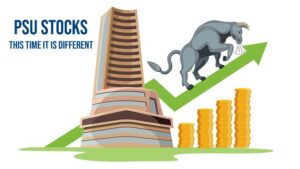In our country Elections have far-reaching consequences. It affects not only the political landscape but also the stock market and economy in a very big way.
Political transitions often trigger changes in government policies, economic priorities, and regulations, subsequently affecting various sectors and companies. While elections introduce volatility in the short term, the long-term effects are primarily determined by the economic reforms and policies implemented by the ruling party.
The analysis of the impact of elections on the Indian market and economy reveals that while short-term volatility is inevitable during election periods, the long-term trajectory is determined by the government’s policy actions and their ability to foster a conducive business environment. The most important is the stability of the government, whether in the form of a majority or a coalition. This alone plays a crucial role.
With less than a year until India’s next general election, the focus is shifting to the year leading up to the polls, as it is during this period that the markets tend to experience significant movement. Based on the historical data of the last four decades and ten elections, it is evident that equity markets have displayed impressive returns as election time approaches. This trend is expected to continue in the current scenario. Several factors indicate that the upcoming returns might surpass those observed in previous elections.
Historical Returns
Looking back at the performance of the equity markets in the eleven months preceding the past ten general elections, there has not been any considerable variation. The Sensex, for instance, has recorded gains every year in ten months prior to approaching general election year. On an average it has gained 19 per cent. One of the lowest returns witnessed was in year 1991 and 2009, and both were very exceptional year in terms of global macro-economic event. During 1991, world saw The Gulf War, which was a major military conflict that lasted from January 17 to February 28, 1991. The war was fought between a United States-led coalition of forces and Iraq, which had invaded Kuwait in August 1990.
The Gulf War had a significant impact on the global economy. The war led to a sharp rise in oil prices, which had a negative impact on economic growth in many countries specially countries like India, which is a major importer of crude oil. The war also led to a decline in global trade, as businesses became hesitant to operate in countries that were considered to be at risk of war. The Gulf War also had a significant impact on the stock market. The war led to a sharp decline in stock prices, as investors became concerned about the impact of the war on the global economy. The stock market even in the United States fell by over 20 per cent in the months leading up to the war, and it did not fully recover until 1993.
Year 2009 was the year after the Global Financial Crisis of 2008, which was a major economic crisis that began in the United States and spread to other countries around the world. The crisis was caused by Subprime Mortgage Crisis, the collapse of the investment bank Lehman Brothers, and the freezing of credit markets. The crisis led to a sharp decline in economic growth, and a decline in stock prices. The economic and stock market impacts of the crisis were felt around the world, and they took several years to fully recover. The Indian equity market declined sharply in the years following the global financial crisis. The frontline index, for example, fell by over 50 per cent from its peak in January 2008 to its low in March 2009. Despite such major global events impacting equity market adversely, in India equity market gave positive returns.
Even during the 1998, which was marked by two global crises—the Asian Financial Crisis and the Russian Crisis, Sensex managed to generate positive returns as we approached the general election. These events had a significant impact on the Indian market. The Nifty 50 started the year 1998 at 3694.62, reaching a high of 4280.96 in April but ultimately falling to its lowest point of 3008.63 in October. The index experienced a 35% decline during the year but rebounded strongly the following year, delivering a 45.24 % increase.
Similarly, in 2003, the Sensex initially dipped but then saw a rise in the latter half of April, maintaining the gains throughout the year. Starting at a low of 2924.03 in April, the benchmark closed the year at its highest point of 5,838.96 in December, resulting in a significant 99.65% return for the year. However, the following year was election in the month of May, which saw a significant decline in the month of May following the expected change in guard at the centre. In the month of May Sensex declined by 16 per cent, despite this Sensex generated 25 % return in ten months prior to general election of May 2004.
Examining the recent past, the year 2013 witnessed global headwinds and domestic challenges such as concerns over the Fed tapering, a weaker rupee, high inflation, and slowing growth. Despite these obstacles, the Sensex recovered from a decline in August and September and closed the year with a nine per cent gain. The following year, it rebounded significantly, delivering a 29.9 % increase.
The year 2018 was marked by the recovery of the Indian economy after the demonetization shock, only to face a setback with the IL&FS credit default crisis. The liquidity crunch in the NBFC sector affected major corporations, resulting in non-banking stocks experiencing losses in the last quarter of 2018. The Sensex reached a high of 38896.63 in August but closed the year just below 36068, yielding a 5.9% return for the year. In next four months to election, Sensex gave return of 8.19 % and as a total return 10 months prior to election was 6%.
The following content is available for FREE Subscription members only. If you don’t have a FREE subscription, please Register here. If you already have Free Subscription membership, please Log in to see reveal rest of the article.






















